Abstract 4/2012
Richard E Allsop
Zeus findings on road safety in the context of EU policy and the UN decade of action 2011-2020
The central objective of the ZEUS programme has been to develop and promote an integrated system of transport safety for Poland. But from the outset this work was seen in an international context – learning from past experience in those countries that already have such systems in place, notably the USA and the Netherlands, and for the future offering a pioneering Polish contribution to the task of achieving across Europe and worldwide a transport safety culture which can deliver to citizens their right to travel and move goods in safety. This safety culture must embrace all means of transport, but it is in use of the roads, on foot and using vehicles of all kinds, that the scale of avoidable death and injury is greatest, and the requirement for more systematic delivery of safety is the most challenging. The internationally relevant findings of the ZEUS programme as they apply to road safety are therefore summarised and discussed in terms of lessons that they may contain for other countries and for international activity. In particular they are related to the European Commission’s policy orientations on road safety 2011-2020, Towards a European road safety area, and White Paper, Roadmap to a single European transport area, as well as the vision of road safety as a right and responsibility for all citizens and the monetary value of prevention of collisions on the roads as estimated in terms of people’s willingness to pay to reduce their number. More widely, the findings are related to the World Health Organisation’s Global Plan for the United Nations’ Decade of Action for Road Safety 2011-2020.
Key words: road safety, ZEUS, policy UN
Kazimierz Jamroz
Human-economic development as the main condition of road safety
Abstract:
Based on a study of literature and own work the road accident demographic mortality rate (WSD) was developed as a measure of road safety. Sets of available data helped to identify groups of the most critical factors which affect a country’s level of road safety. A model was developed to show how the WSD rate changes using the power-exponential function which includes the most relevant factors. The function is built from more than ten independent variables representing spatial, demographic, economic, social, motorization, infrastructural and transport characteristics of the countries under analysis. It was established that the level of human-economic development is the most critical factor. The article presents a function which describes how the WSD rate changes. It can be used to explain a country’s current level of road safety and its forecasts.
Key words: road safety, mortality rate, influencing factors, models
Lech Michalski, Kazimierz Jamroz, Dorota Gajda
A preliminary interim evaluation of the National Road Safety Programme GAMBIT 2005
Abstract:
Six years of the National Road Safety Programme GAMBIT 2005, the current state of road safety in Poland and new challenges in this scope defined by the European Union until 2020, tend to perform assessments and identify obstacles and barriers causing delays in the implementation of planned goals and objectives. Preliminary analyzes indicate that only programming of prevention or partial realization is not sufficient to achieve a stable trend of reducing the number of road accidents. This paper presents a preliminary assessment of the effects of implementing the National Programme GAMBIT 2005 and directions of improvement when preparing next programs and during the implementation.
Key words: road safety, GAMBIT,
Joanna Wachnicka
Surveys of factors affecting road safety in voivodeships
Abstract:
Voivodeships are basic territorial regions in Poland. Factors influencing road safety in voivodeships are poorly known so far. Some analysis methods and factors have been identified from literature research from other countries. Then available data referring to the situation in voivodeships between 1998 and 2008 have been collected to be analyzed in order to find the most significant factors. This article presents preliminary results of wider voivodeships road safety scientific research.
Key words: regions, road safety, factors, models, voivodeships
Piotr Olszewski, Anna Zielińska
Analysis and modelling of pedestrian safety in road traffic
Abstract:
Analysis of pedestrian fatalities in Poland in the years 2001-2011 in comparison to other EU countries. Examination of factors increasing fatality rates according to time of the day and time of year. Application of logistic regression for modelling pedestrian accident severity. Results in the form of odds ratios of pedestrian death under different circumstances and probability functions of death for different pedestrian gender and age as well as different area type and road speed limit.
Key words: pedestrian safety, road accidents, pedestrian hazard, logistic regression, model of accident’s severity.
Joanna Żukowska, Krzysztof Piskorz
SOL Project – A Comprehensive Road Safety Strategy for Central Europe
Abstract:
Regional Traffic Centre –Road Safety Centre in Olsztyn together with other institutions located in the Central Europe has been developing European Project SOL – “Save our lives” financed from the European Operational Project – Central Europe in the frame of the European Regional Development Fund. Its aim is to promote sustainable mobility development as well as increase of road safety awareness in the central European countries which will influence life quality of the societies in the project partner countries.
Key words: road safety, European programmes, road safety strategies, road safety partnership
Ida Leśnikowska-Matusiak
Educational programme DRIVER 50 +
Abstract:
According to the demographic prognoses for the industrialized countries in the following 30 years a significant increase in the number of elderly people will take place. Majority of these people will remain active, also as drivers, despite the limitations resulting from their age.The article presents the results of various researches carried out worldwide with regard to older drivers, activities undertaken towards them in selected countries as well as educational package dedicated to B category drivers over 50 years old developed in the Motor Transport Institute.
Key words: elderly people, drivers, educational programme
Jan Unarski
The role of safety culture in the development of the road traffic safety
Abstract:
The article describes the depletion of the possibility of further improvement of the road transport safety in the idea of disperced forces and means. At this phase, only integrated security systems and a new, developing wave called a safety culture in transport can contribute to reducing accidents and disasters. Its special feature is to arouse by the society policy makers general interest for the social benefits that follow from improved transport safety and to create a friendly climate to complete this changes. It also identifies twelve areas of action and describes the key factors to be taken into account when planning their implementation.
Key words: transport, safety culture, road traffic safety

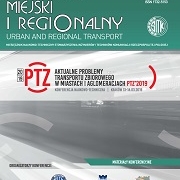
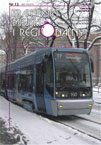 SITK RP
SITK RP 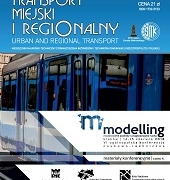
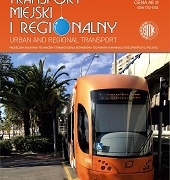
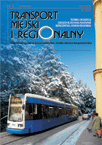 SITK RP
SITK RP 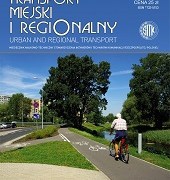

 SITK RP
SITK RP SITK RP
SITK RP